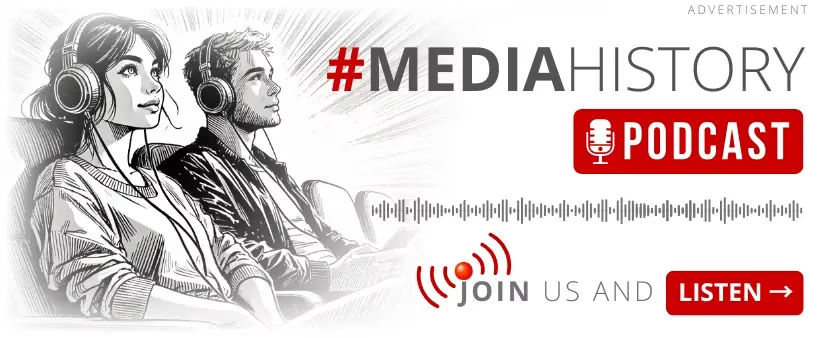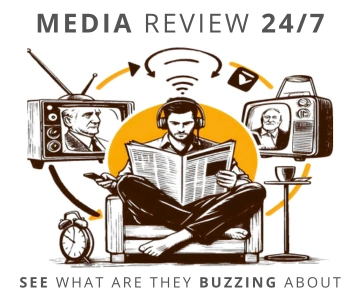 image: bing.com/create
image: bing.com/createUpdated: April 2024
More than half of all internet traffic comes from search engines. According to recent data from Semrush, January 2024, as much as 66% of website clicks originate from Google, with 5.9 million queries made every minute. These figures are impressive. Also noteworthy is the impact of ranking position on click-through rate (CTR):
| Search Engine Position | CTR |
|---|---|
| 1 | 39.8% |
| 2 | 18.7% |
| 3 | 10.2% |
| 4 | 7.2% |
| 5 | 5.1% |
| 6 | 4.4% |
| 7 | 3.0% |
| 8 | 2.1% |
| 9 | 1.9% |
| 10 | 1.6% |
The lower the position, the more "invisible" it becomes. The takeaway? It’s crucial to appear high in search results. Even the most brilliant text can go unnoticed if it’s buried. Social media also offers potential, but due to its constant flow of new content, even great material can quickly lose attention. To give your article a longer "shelf life," it must be findable in search engines.
One way to score extra points with Google, Bing, or other search engines is to ensure readability and UX. That means clarity and usability. These are important for readers, and search engine algorithms can assess, measure, and reward them with additional points.
Readability
The principles of clear presentation are extensive enough for textbooks, but a few basic rules are easy to remember and apply. With them, your article will look appealing at first glance – sometimes, that first glance is crucial. Statistically, users stop reading after just 20% of a webpage. So:
- Break up text into paragraphs Long blocks of text are tiring and subconsciously off-putting. Ideally, keep paragraphs to 4-5 lines on a computer screen, doubling for smartphones. The brain "imagines" a paragraph is readable in a single breath. Ensure it’s manageable.
- Use subheadings Subheadings signal the reader about topic shifts. Algorithms also appreciate them, especially every 300-350 words.
- Include lists Lists make statistical or enumerative information more digestible and memorable. They also enhance the text’s visual appeal.
- Highlight important points Emphasize crucial points to draw attention, making them easier to spot and remember.
- 21 words per sentence is a limit A readability rule is no more than 20 words per sentence to maintain focus. Avoid longer sentences where possible.
- Simplify vocabulary Simpler is often better. Keep in mind, algorithms favor simplicity, ideally readable by a teenager. Free tools like Logios, Jasnopis, or Yoast SEO can help verify this.
Adding multimedia to your article, like an image, chart, table, or video, makes it more engaging and keeps readers’ attention longer. Algorithms also recognize this, rewarding articles where users spend more time.
Formatting tips during the GrafIT project training
Typography
Typography also impacts readability. Online authors have limited influence over typography, but knowing the basics is useful to ensure readability and UX principles.
- Sans-serif fonts Popular for online content as they read faster on screens.
- Size matters Recommended font size for longer online texts is around 16 pixels.
- Ideal line spacing Scientifically calculated at 1.48 times the height of the text. A rounded value of 1.5 is often used.
- Contrast Excessive or low contrast strains the eyes. Optimal contrast is 4.5:1. Test it with WebAIM.
Following these rules can earn a few extra SEO points. They won`t replace content quality, but they can move your article up in search results. And those few extra spots can make a difference.
More about writing, SEO, and content marketing is covered in my workshops. Join us at Dwornik.pl. Training and Workshops to Go. Have other tools to improve readability? Let us know on LinkedIn!
COMMERCIAL BREAK
New articles in section Skills and knowledge
War reporter in the new reality. Evolving techniques, same purpose
KFi
What happens when war breaks out just across the border and journalists aren't ready? Polish reporters faced that question after Russia invaded Ukraine in 2022. Lacking training, they improvised: blurred details, hid names, and balanced trauma with truth.
A heuristic trap in media coverage. How loud headlines boost fear
Bartłomiej Dwornik
A negative message that rests on emotion lifts the sense of threat by 57%. Why do reports of a plane crash drive investors away from airline shares? Why do flood stories spark worry about the next deluge? The pattern is irrational yet clear and proven.
How LLMs are reshaping SEO. Smart content strategies for the age of AI
BDw
For years, SEO was a fairly predictable game. Pick the right keywords, optimize your content, and watch your website climb the rankings. But today, a silent revolution is underway - and it`s being led by large language models (LLMs) like ChatGPT, Claude, Gemini, and DeepSeek.
See articles on a similar topic:
Social Influence of Virtual Avatars. A Study by SWPS University
KF
How confident are we in our judgments, and how well can we defend our own opinions? There’s a good chance that we might change our views under the influence of a group of avatars in virtual reality. Researchers from SWPS University studied human susceptibility to the opinions of others, including virtual characters.
Computer-Assisted Reporting. Can algorithms replace journalists?
Bartłomiej Dwornik
Can algorithms replace journalists? This question keeps coming back, especially in an era of the growing role of artificial intelligence and automation. However, instead of painting apocalyptic visions of newsrooms filled with robots, it is worth looking at the tools that are already changing how information is created and analyzed.
How to Write an Article That Google Loves and People Understand
Bartłomiej Dwornik
The order of priorities in this guide's title is intentional. In 2024, to reach a larger audience, you must first convince the algorithms to display your content to readers. First - the article must be factually sound. Second - it should look appealing and be easy to read. We’ll focus on the latter.
Where to Publish Your Own Articles? Start Your Own Website
Bartłomiej Dwornik
If you want to try your hand at citizen journalism or simply run your own thematic blog, you’ll eventually face the decision of choosing your own domain name and server to host your site. In a report published by Interaktywnie.com, you’ll find expert advice on how to get started.





























